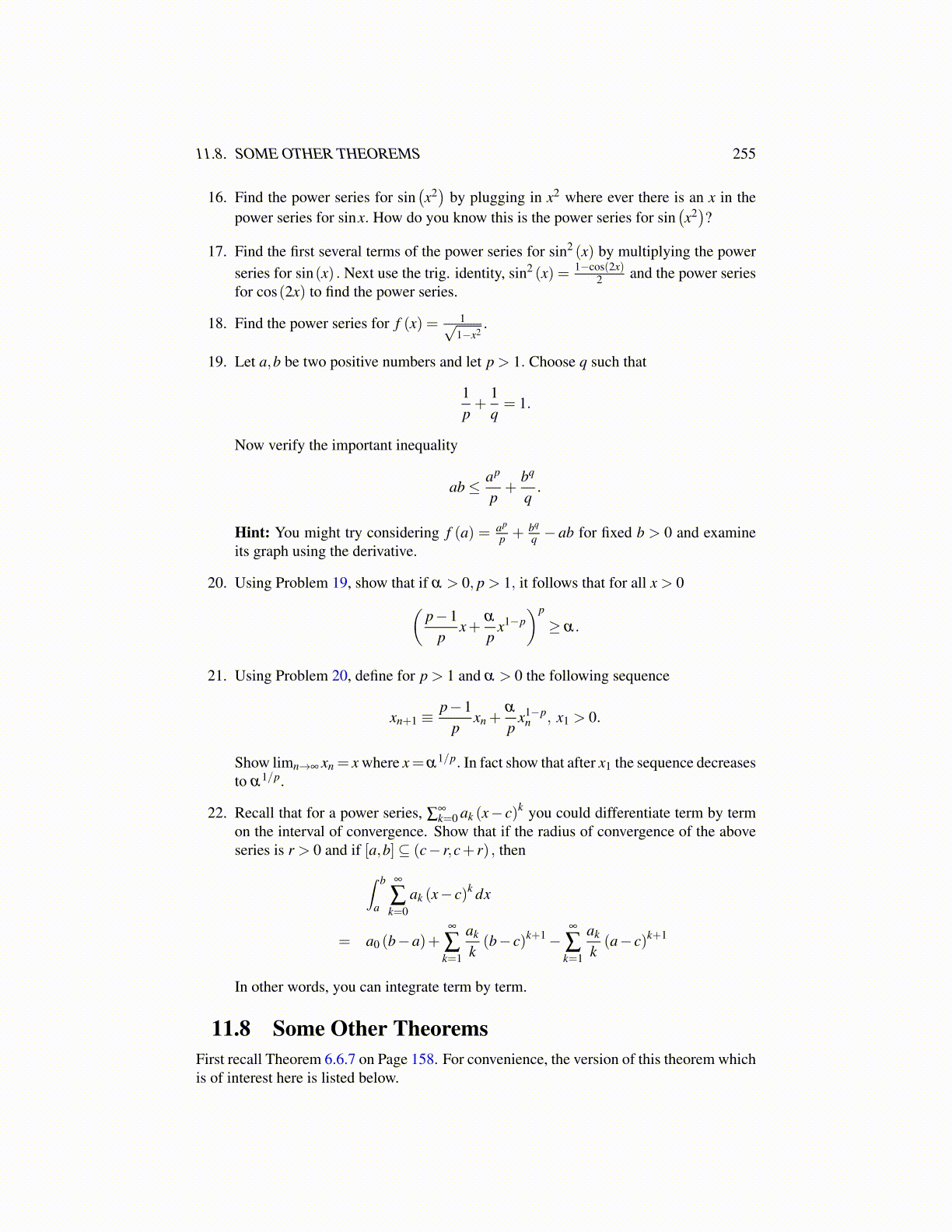
11.8. SOME OTHER THEOREMS 255
16. Find the power series for sin(x2)
by plugging in x2 where ever there is an x in thepower series for sinx. How do you know this is the power series for sin
(x2)?
17. Find the first several terms of the power series for sin2 (x) by multiplying the powerseries for sin(x) . Next use the trig. identity, sin2 (x) = 1−cos(2x)
2 and the power seriesfor cos(2x) to find the power series.
18. Find the power series for f (x) = 1√1−x2
.
19. Let a,b be two positive numbers and let p > 1. Choose q such that
1p+
1q= 1.
Now verify the important inequality
ab ≤ ap
p+
bq
q.
Hint: You might try considering f (a) = ap
p + bq
q − ab for fixed b > 0 and examineits graph using the derivative.
20. Using Problem 19, show that if α > 0, p > 1, it follows that for all x > 0(p−1
px+
α
px1−p
)p
≥ α.
21. Using Problem 20, define for p > 1 and α > 0 the following sequence
xn+1 ≡p−1
pxn +
α
px1−p
n , x1 > 0.
Show limn→∞ xn = x where x=α1/p. In fact show that after x1 the sequence decreasesto α1/p.
22. Recall that for a power series, ∑∞k=0 ak (x− c)k you could differentiate term by term
on the interval of convergence. Show that if the radius of convergence of the aboveseries is r > 0 and if [a,b]⊆ (c− r,c+ r) , then∫ b
a
∞
∑k=0
ak (x− c)k dx
= a0 (b−a)+∞
∑k=1
ak
k(b− c)k+1 −
∞
∑k=1
ak
k(a− c)k+1
In other words, you can integrate term by term.
11.8 Some Other TheoremsFirst recall Theorem 6.6.7 on Page 166. For convenience, the version of this theorem whichis of interest here is listed below.